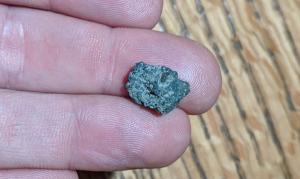Blog
Point of Impact
10 September 2024
 NASA/JPL/USGS
NASA/JPL/USGSMeteorites strike Earth every day. It’s estimated that about 100 - 300 metric tonnes of material strike our planet every year. Most of it consists of sand-grain sized dust that burns up in the atmosphere, but each year a few thousand will reach Earth’s surface.
The vast majority of meteorites trace their origins to comets or the asteroid belt, but some of them come from the Moon or Mars. We know this by analyzing their chemical composition. While the Lunar meteorites have much to tell us, it is the Martian meteorites that are the greatest treasure for they are the only fragments of the Red Planet we currently have. By studying their chemistry and composition we have learned that Mars was once a warm and wet world similar to Earth.
 Brian Koberlein
Brian KoberleinThere are about 200 meteorites we have confirmed as Martian in origin. There composition shows that they likely originated from about 10 large impacts on Mars. To be powerful enough to throw fragments of Mars into space, the impacts must have been large enough to make sizable craters, perhaps dozens of kilometers across. Which raises an interesting question. Which particular craters are connected to the meteorites we have? A new study in Science Advances explores this question.1
The team started by looking at the chemical similarities in each group of associated meteorites. From this they could get an idea of the age and geology of a particular impact site. They then compared this to the known age and composition of various regions of Mars, looking for craters that were a reasonable match. They were able to find an originating crater for about five of the groups.
This is important because knowing the precise origin gives us a more accurate picture of the evolution of Mars. We already have a good general understanding of the early history of Mars, but with specific impact sites we can compare regions. Perhaps early seas existed on Mars while other regions became deserts. Which regions were the last to dry, and therefore might be good sites for finding evidence of life. The study also found impact craters that are similar to the ones that produces meteorites but have no associated meteorites. As we find more Martian rocks, they might be part of new groups originating from these impacts.
Until we can recover rocks from Mars directly, the couple hundred Martian meteorites are our only physical link to our red neighbor. And thanks to this study we have a better idea of that link.
Herd, Christopher DK, et al. “The source craters of the martian meteorites: Implications for the igneous evolution of Mars.” Science Advances 10.33 (2024): eadn2378. ↩︎